Darley Abbey - Heritage Walk No. 5 - Down Darley
w/e 16 March 2014
All of this week's pictures were
taken with a Kodak DX6490

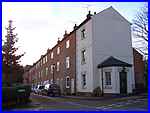 Our
fifth and final walk at Darley Abbey once again starts at interpretation
board B near the gates to Darley Park. At a little under half
a mile in length it is again a short walk and if time is not
a constraint could easily be tacked onto the end of the fourth
walk to St Matthew's Church. In fact instead of retracing the
route along Abbey Lane to the park gates it is just as easy to
turn into Old Lane from Church Lane and then immediately right
to Brick Row (right) which features early in the Down Darley
walk. For the purposes of this walk though the images below relate
to the route as described in the Heritage Walk leaflet and begins
on New Road. Our
fifth and final walk at Darley Abbey once again starts at interpretation
board B near the gates to Darley Park. At a little under half
a mile in length it is again a short walk and if time is not
a constraint could easily be tacked onto the end of the fourth
walk to St Matthew's Church. In fact instead of retracing the
route along Abbey Lane to the park gates it is just as easy to
turn into Old Lane from Church Lane and then immediately right
to Brick Row (right) which features early in the Down Darley
walk. For the purposes of this walk though the images below relate
to the route as described in the Heritage Walk leaflet and begins
on New Road.
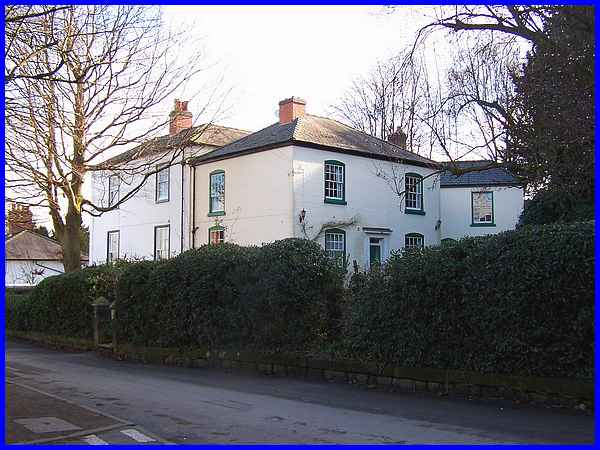
So turning right from the park gates, the leaflet advises proceeding
downhill along New Road and pausing at the end of Brick Row to
view two detached houses set in their own grounds. At first glance
The White House (c1820) on the left and The Hollies (1803/06)
on the right appear to be one building or at least semi-detached
properties but a closer look shows that they are two individual
houses built flush to each other. The two were known as the Managers'
Houses which suggests not unreasonably that they were originally
built for the senior personnel at the Evans' mills.
|
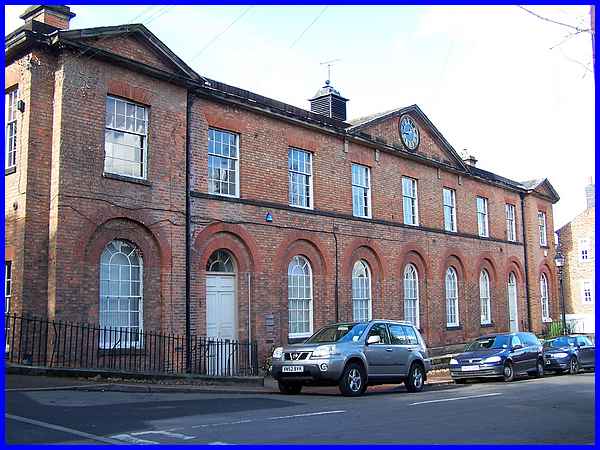
On the corner of New Road and Brick Row stands the old St Matthew's
School of 1826. The two wings of the school provided accommodation
on the left for the Schoolmaster and, at the right hand end,
for the Schoolmistress.
|
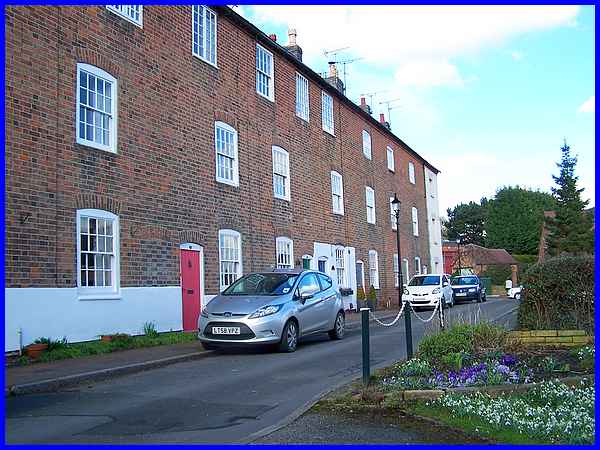
Next to the school and running along the rest of Brick Row is
a terrace of fourteen three-storey houses that were part of the
Evans' dynasty. There is some debate over the age of the terrace
as some believe it dates from the same time as the school despite
its earlier appearance whilst another source suggests it was
built in two phases from 1797 to 98 and 1798 to 1800 using bricks
from a local brickyard - hence the name of the street. Much more
modern houses have been built opposite the terrace but originally
allotment gardens were provided here for each of the houses.
Another interesting fact is that the internal walls on the top
storey varied to allow different sized families to be accommodated.
|
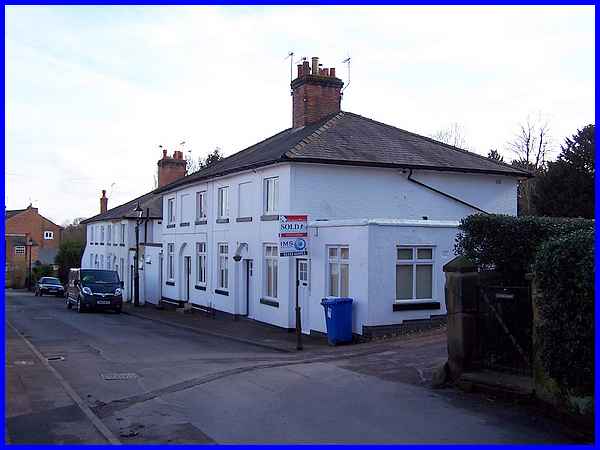
Returning to New Road and continuing downhill, the next homes
after The White House are contained in two blocks of cluster
houses. These white two-storey blocks of four were visible from
Darley House and, like the school, are thought to date from 1826.
|
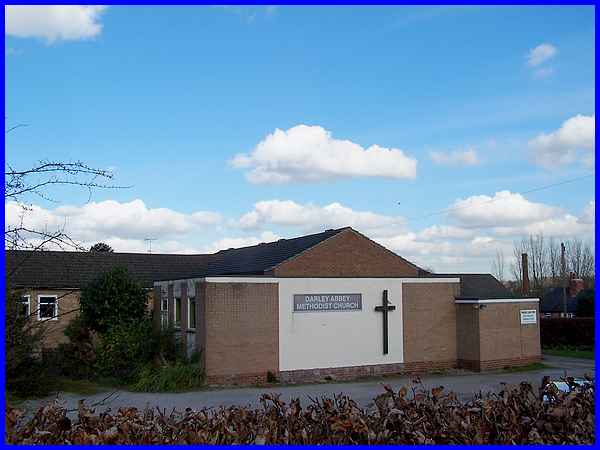
On some of the land opposite these cluster houses the Darley
Abbey Methodist Church has been built on the former allotments
where the mill workers grew vegetables.
|
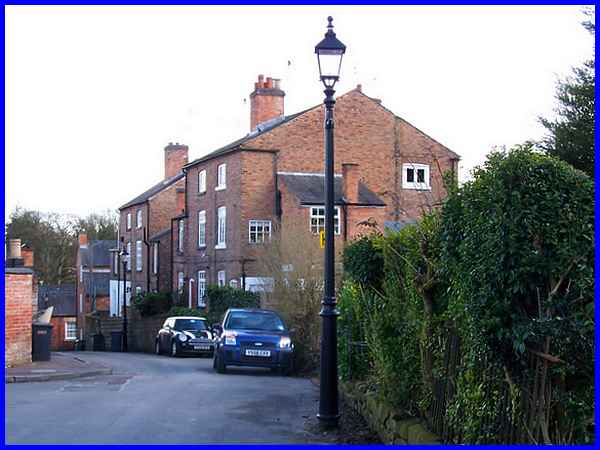
Two more blocks of cluster houses this time three-storeys high
stand further down the hill and again are of the 1826 vintage.
|
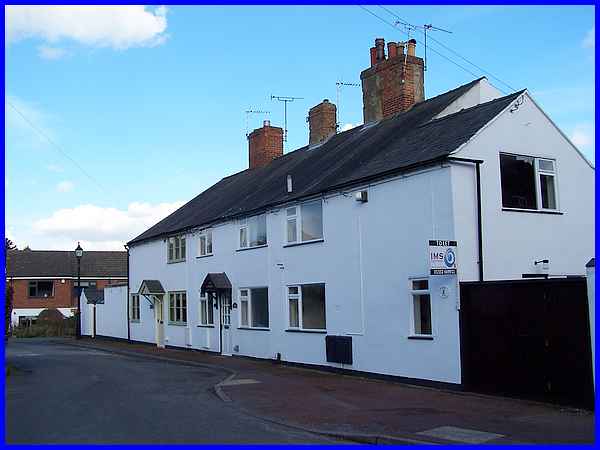
Our route however is to the left along a short street called
The Hill which on one side is lined with more cottages built
for the mill workers. Opposite is the site of the Methodist Church
on the former allotments again and at the lamp post at the end
of the cottages the road turns sharply to the right and becomes
North Row.
|
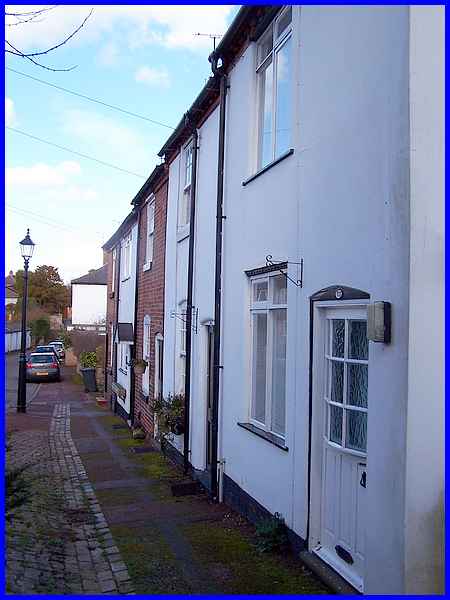
North Row is another very short street and again turns at a sharp
corner into West Row (above). Both North and West Rows are lined
on one side by old mill workers' cottages.
|
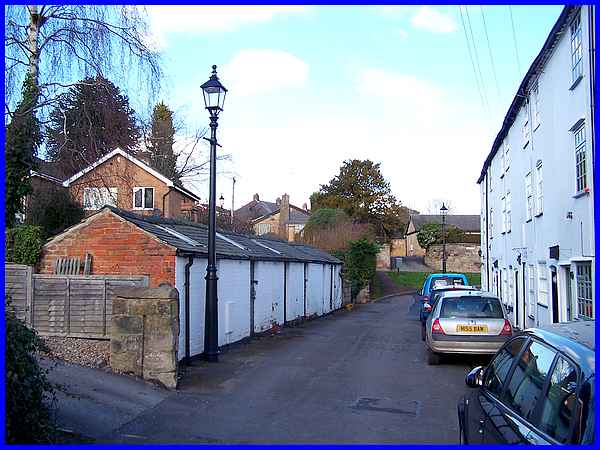
There has been some significant infilling in previously open
spaces in Darley Abbey over the years, some more sympathetic
to the existing buildings than others and more recent structures
can be seen in this image. One feature that has survived from
that earlier period as well as the many mill workers' dwellings
we have seen throughout our walks, is the line of single-storey
buildings near the end on West Row. These were originally toilets
or "privies" as they were called associated with the
cottages on the right which are actually the rear of those pictured
in Flat Square at the start of Walk No. 2.
|
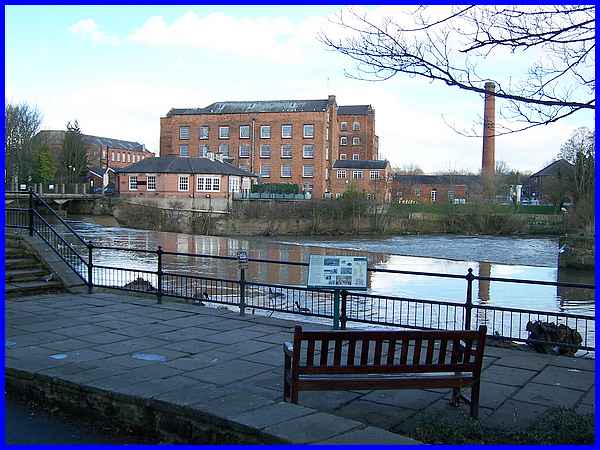
Turning right from the end of West Row onto Old Lane leads in
just a few steps back to the river bank, interpretation board
A and the view across the River Derwent to the Boar's Head Mill
complex established all those years ago by the Evans family.
It also brings to a conclusion this series of Heritage Walks
around the village of Darley Abbey. For much more about the village
however it is worth searching the Derwent Valley Mills website
where there are several sections devoted to Darley Abbey - click here to view one of them.
|

